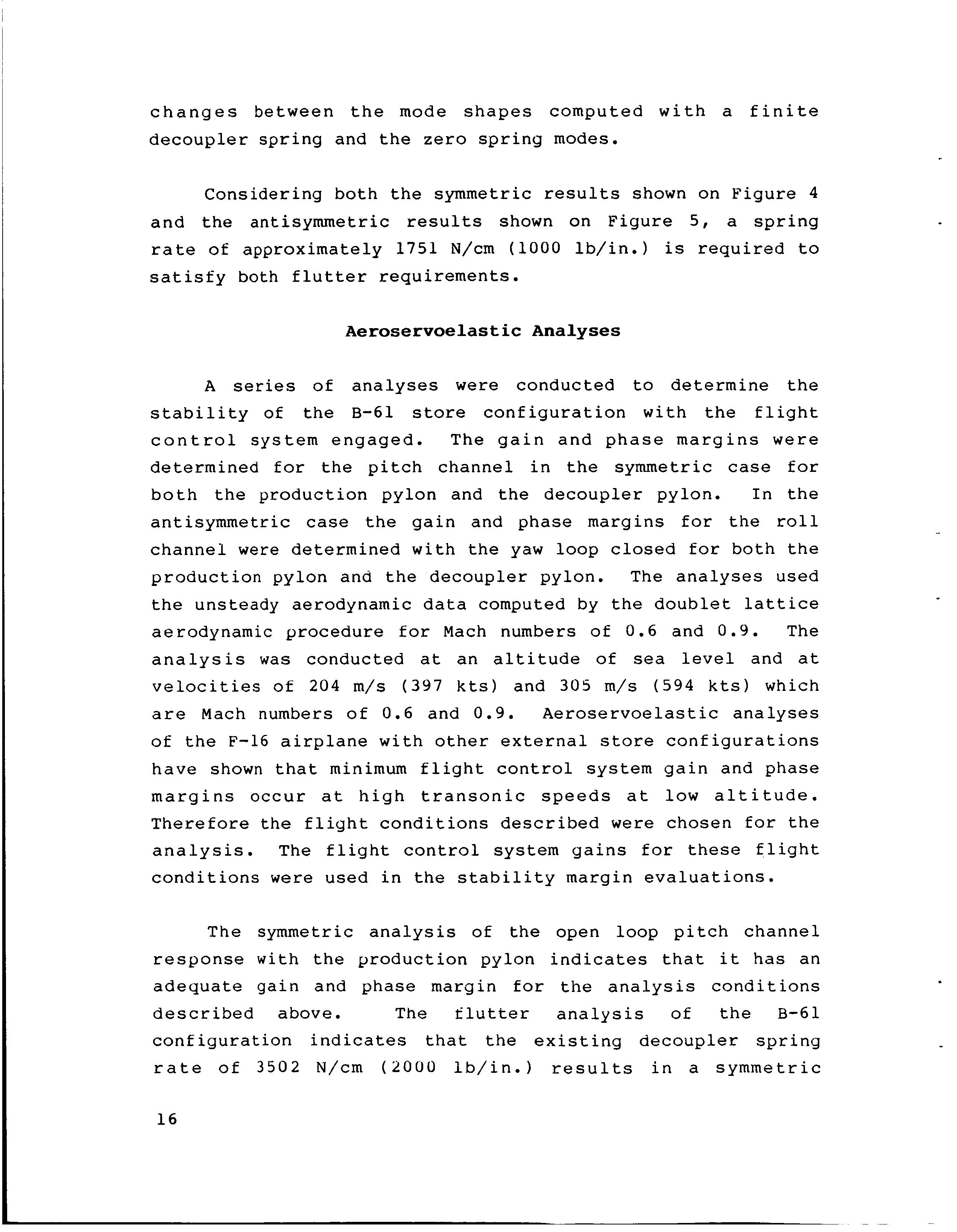
1 minute read
Aeroservoelastic Analyses
from NASA Technical Reports Server (NTRS) 19870001427: Design and fabrication of the NASA decoupler pylon
changes between the mode shapes computed with a finite decoupler spring and the zero spring modes.
Considering both the symmetric results shown on Figure 4 and the antisymmetric results shown on Figure 5, a spring rate of approximately 1751 N/cm (1000 lb/in.) is required to satisfy both flutter requirements.
Advertisement
Aeroservoelastic Analyses
A series of analyses were conducted to determine the stability of the B-61 store configuration with the flight control system engaged. The gain and phase margins were determined for the pitch channel in the symmetric case for both the production pylon and the decoupler pylon. In the antisymmetric case the gain and phase margins for the roll channel were determined with the yaw loop closed for both the production pylon and the decoupler pylon. The analyses used the unsteady aerodynamic data computed by the doublet lattice aerodynamic procedure for Mach numbers of 0.6 and 0.9. The analysis was conducted at an altitude of sea level and at velocities of 204 m/s (397 kts) and 305 m/s (594 kts) which are Mach numbers of 0.6 and 0.9. Aeroservoelastic analyses of the F-16 airplane with other external store configurations have shown that minimum flight control system gain and phase margins occur at high transonic speeds at low altitude. Therefore the flight conditions described were chosen for the analysis. The flight control system gains for these flight conditions were used in the stability margin evaluations.
The symmetric analysis of the open loop pitch channel response with the production pylon indicates that it has an adequate gain and phase margin for the analysis conditions described above. The flutter analysis of the B-61 configuration indicates that the existing decoupler spring rate of 3502 N/cm (2000 lb/in.) results in a symmetric
16










